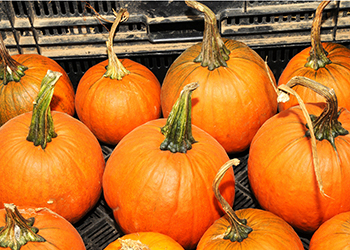
1. Use dried herbs to make fragrant fall wreaths and dried flower arrangements.
2. Pick bagworms from evergreen shrubs to eliminate the spring hatch from over-wintered eggs.
3. Cut down stems and foliage of herbaceous perennials after two or three hard frosts or when leaves begin to brown.
4. Squash and pumpkins should be harvested when they have bright color and a thick, hard skin. These vegetables will be abundant in farmer’s markets and will make a colorful and healthy addition to fall dinners.
5. Sketch out where you planted various vegetables in your garden back in the spring. This will come in handy next spring so when you plant, you can rotate your crops and help prevent disease.
6. If rain is lacking, continue to thoroughly water trees, shrubs, planting beds, and lawn areas. It is especially important to keep newly planted evergreens watered.
7. Outwit hungry squirrels and chipmunks by planting bulbs in established groundcovers.
8. Use a mulching blade to chop leaves finely and let them decompose on the lawn.
9. Keep collecting ripe seeds! Dry them out and place them in labeled brown paper envelops within an air tight container, and store in a cool place.
10. Limit herbaceous plant material located a few feet away from the house to eliminate hiding places for insects and mice, which could wind up indoors as temperatures plummet.